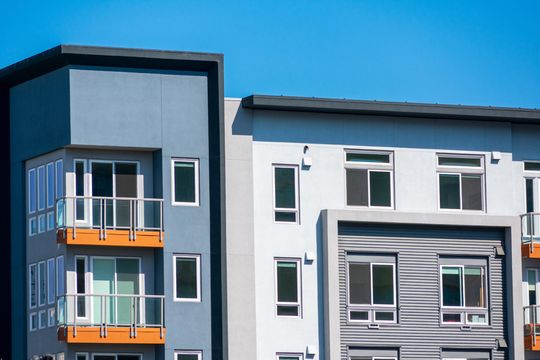Current multifamily acquisition performance statistics forecast strong returns for 2022. As investment and sale volume increases, acquisition and asset management professionals are looking for creative and proactive solutions to drive deals forward and remain competitive.
The implementation of smart access and security solutions are creating opportunities to significantly increase operating income and reduce operating expenses in strategic value-add acquisitions. When factoring these increased revenue projections into underwriting models, new acquisition projects are achieving pro formas faster and expediting the amount of time to reach stabilization. By minimizing the stabilization period, assets start generating revenue much faster and investors are able to see their returns sooner.
Suggested Posts:
- Maximizing NOI with Smart Apartment Building Security
- Best Property Management Software for Multifamily Buildings
- Smart Intercom System for Apartments: 36 Features to Look For(Opens in a new browser tab)
2021 Multifamily Acquisition Performance Statistics
According to ALN, the average duration from lease start to stabilization from the beginning of 2021 through October was 13.8 months. During that time, almost 2,100 properties with a collective 425,000 units have been stabilized.
The occupancy rate in stabilized properties reached 96.1% in October averaging over a 12 month period. Average occupancy nationwide at the end of October was 94.2%, which reflects an increase of 249 basis points during that same timeframe.
Reducing Stabilization Periods With Smart Access
Implementing a smart access control solution can significantly improve many of those projections. In turn, this expedites the timeline to bring current figures to pro forma assumptions which effectively reduces the stabilization period.
Jump to a comprehensive list of stabilization assumptions for any given multifamily property acquisition.
But first, what is smart access?
Simply, a smart access solution is a cloud-based system that uses secure, advanced credentialing via two factor authentication such as mobile or biometric access. It supports integration and interoperability in order to improve operational efficiencies and deliver deep data insights to make thoughtful, intentional decisions regarding the property.
Increasing Gross Potential Rent
Class A amenities like smart access allow properties to collect more gross rent for two reasons. First, the logic follows that because a property has a high-end, advanced product, it’s able to command above-average monthly rent. Second, the increase in rent collection can be attributed to a smart building technology fee, amenity fee or technology package that is built into the pro forma rent.
Increasing the gross potential rent increases operating income during stabilization which allows owners and investors to reach pro forma rents quicker and reduce time to stabilized assumptions.
Charging Amenity Fees
Operating income factors in an “other income” line item to account for smaller fees like paying for a reserved parking spot or coin laundry. Now, as buildings are becoming more technologically equipped, properties are bundling their smart building technology into a tenant fee. This can be built into one amenity fee or charged separately as a smart building technology fee.
Apartment buildings are partnering with various providers to purchase services in bulk – an example could be managed wifi for the entire building – and offering that service or amenity back to residents at a discounted rate higher than they would be able to get themselves. This is a win-win for both the property and the tenant.
Smart access acts as a smart building technology that can be wrapped into a technology bundle and as an amenity that can be built into an amenity fee based on the benefits it provides to residents like video intercom, remote guest access, package and delivery management, etc.
Like gross potential rent, amenity and/or smart building technology fees allow properties to reach their projections and begin generating revenue faster.
Close the Loss to Lease Gap
As established with gross potential rent and amenity fees, smart access is enabling owners and investors to expedite their timeline to return with increased revenue. Loss to lease, which is the difference between market rents and average actual rent, is also impacted by the benefits of smart access. If the property doesn’t have a gain to lease, the standard loss to lease stabilized assumption is 2%. This is much easier to attain and continue to maintain with the higher gross rent and additional income which closes the gap between the two figures to reach this assumption faster.
Anticipate Lower Turnover and Vacancy Rate
Physical security is one of the most, if not the most, important considerations for renters. A renter might compromise on an apartment without a fitness center for lower rent and a membership at a local gym. But no renter is willing to compromise their physical security in the place they live.
Smart access significantly improves the physical security of a property. Physical access requires two factor authentication which ties identity back to the individual as opposed to the access method. Smart access has advanced surveillance and tracking capabilities, plus highly customized guest access that closes the gap left by permanent PIN codes and legacy intercom systems. Further, in a recent survey by NMHC, 66% of surveyed renters want smart security and 60% want smart locks.
With this in mind, properties are able to anticipate lower vacancy rates to meet their stabilized assumption based on the market data.
Cut Back on Contract Services
More often than not, legacy access and intercom systems require the third-party provider to make changes and updates to the system. While this will vary, the most extreme scenarios require the provider to come and update the tenant directory each time a tenant moves out or in.
Cloud-based security operates from any web-based dashboard or mobile app, and never requires a provider to come on-site to make updates or changes to the software or data. Not only does it cut back on the expense, it also allows operators to remotely grant access to other contract service providers without the need to be on-site themselves, which boosts their efficiency and allows them to devote their time to more productive tasks that infuse value into the property.
Cutting back on contract services reduces the amount needed to allocate to operating expenses. Funds can then be allocated elsewhere or adopted as revenue to move towards a shorter stabilization period.
Minimize Maintenance and Reduce Repairs
Legacy intercom systems are wired throughout the property, which significantly increases the instances of maintenance and repair to them.
Read our recent Swiftlane Customer Success Story to find out more about how one firm chose Swiftlane Smart Access for their new development after continuous issues with tenants putting nails through the wall, hitting the intercom wire, and completely shorting the system.
Additionally, legacy access systems are cumbersome and run on outdated technology that is far more likely to need repair in addition to the regular required maintenance.
Smart access has integrated video intercom capabilities that require no wiring throughout the building, which eliminates the risk of repair to in-unit hardware and wiring. Routine maintenance is not required because cloud-based management automatically updates to the latest software.
Like contract services, minimizing maintenance costs and reducing repairs lowers the cost associated with this operating expense line item and frees capital to be used elsewhere to expedite the revenue-generating timeline.
Interested in Smart Access for Your Acquisition?
Get in touch with us to learn more about smart access solutions to reduce stabilization periods at your property.




